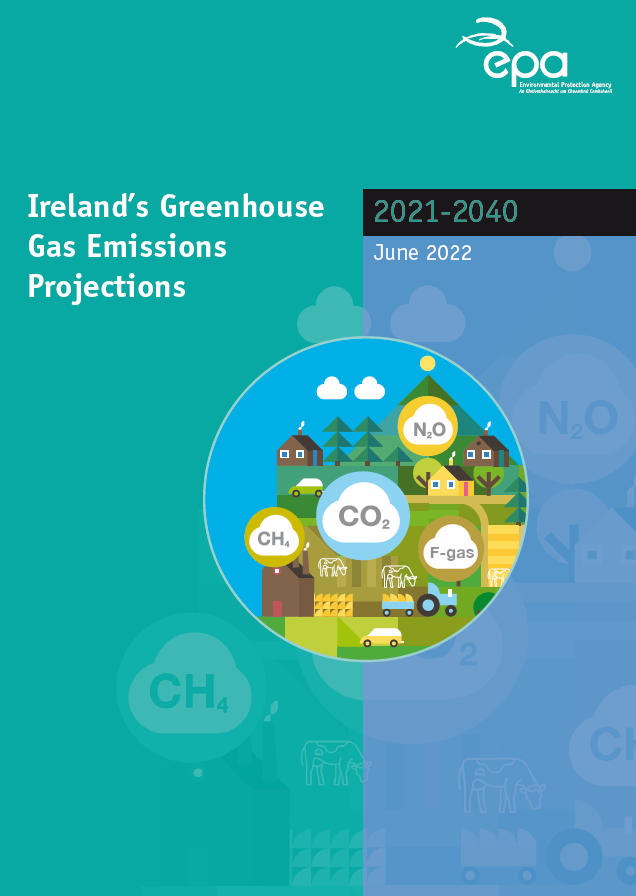Ireland's Greenhouse Gas Emissions Projections 2021-2040
Summary: This report provides an updated assessment of Ireland’s total projected greenhouse gas emissions out to 2040 which includes an assessment of progress towards achieving its National ambitions under the Climate Action and Low Carbon Development (Amendment) Act 2021 and EU emission reduction targets for 2030 as set under the EU Effort Sharing Regulation (Regulation (EU) 2018/842).

Ireland’s Greenhouse Gas Emissions Projections 2021-2040 infographic
Ireland’s Greenhouse Gas Emissions Projections 2021-2040 data